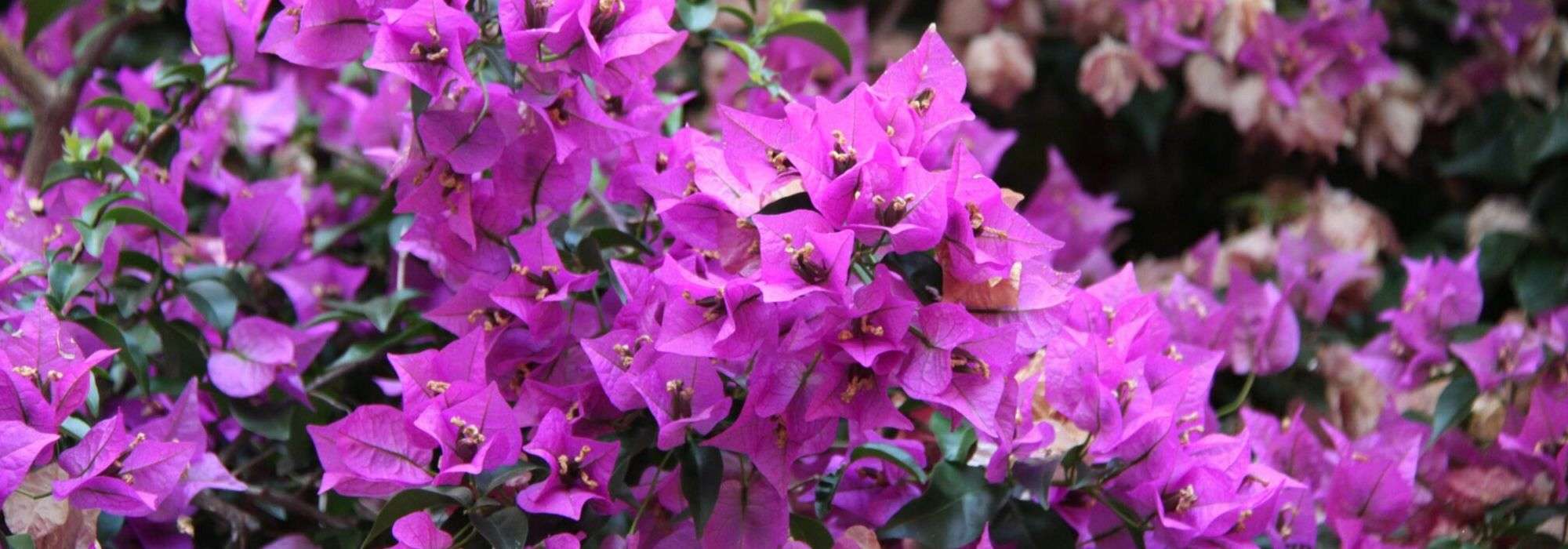
Bougainvillea: planting, care, growing in containers and in the garden
Contents
Bougainvillea in a nutshell
- Bougainvillea is an emblematic climbing plant of the Mediterranean and other sun-drenched regions
- Its flowering, with very colourful bracts in red, blue, purple, orange, yellow or white, is dazzling from late spring to early autumn
- Frost-sensitive, it only tolerates being grown in ground in regions with mild winters that never see frost; elsewhere, grow it in a large pot to overwinter
- It grows in full sun in any well-drained soil
- Easy to care for and exuberant, it can climb to 8 metres when it thrives, covering a wall, a façade, a pergola or scrambling into a flowering hedge
A word from our expert
Bougainvillea, also known as paperflower, is an iconic climbing plant of Mediterranean landscapes and of tropical and subtropical zones of South America where sun reigns supreme. It perfectly embodies exoticism and cheerfulness of its native lands.
It is prized for its exuberant summer flowering in pure, bold colours, and for its luxuriant foliage that remains semi-evergreen in mild winters.
Red, blue-violet, pink or orange bougainvillea, this bush adds an elegant yet exotic touch to gardens in our mildest regions.
Tender, bougainvillea can only be grown in open ground in gardens sheltered from frost. Gardeners in more continental areas will grow it in a large pot and overwinter it under cover. Most bougainvilleas are frost-tender, except Bougainvillea specto glabra ‘Violet de Mèze’, which will tolerate down to -8°C.
Easy to grow and undemanding, it thrives in sun in any well-drained soil.
Generous, it can reach up to 8 m in height at maturity and will lavishly dress a pergola, a trellis, or even an entire south-facing house façade.
Why a bougainvillea fails to flower or loses its leaves, how to grow it in a pot — discover our tips to successfully grow this sumptuous Mediterranean climbing plant that will captivate you with its brilliantly colourful flowering!
Description and botany
Botanical data
- Latin name Bougainvillea
- Family Nyctaginaceae
- Common name Bougainvillea
- Flowering May to October
- Height 0.45 to 8 m
- Exposure Sun
- Soil type All, well-drained
- Hardiness down to -5°C; frost-tender depending on species
Bougainvillea, better known as bougainvillier or bougainvillée, is a climbing plant belonging to the family Nyctaginaceae, like four o’clock. It is native to the tropical forests of Brazil and South America, but has now acclimatised to many regions with mild temperate climates such as California and the French Riviera (so-called “orange zone”). It is also very common in the Antilles.
There are around 14 tropical and subtropical species and more than 300 horticultural cultivars and hybrids, such as spectabilis (x) glabra resulting notably from the cross-breeding of Bougainvillea glabra and Bougainvillea spectabilis, the two most widespread species. The very numerous cultivars offer great diversity in size, flower colour and foliage and are usually grouped by colour, like Bougainvillea spectabilis ‘Blanc-rose’, ‘Violet de Mèze’, Bougainvillea spectabilis ‘Rouge sang’, etc. They are not hardy, do not tolerate negative temperatures for the most part; only a few varieties prove more cold-resistant (down to about -8°C).
Bougainvillea is a fast-growing sarmentous bush that can form in just a few years a large shrub 2 to 8 m high in every direction. In the ground, its lianas can reach up to 7 m in length when well established. However, more compact and smaller varieties exist today (‘Flame’) suitable for hanging baskets and window boxes. The plant needs support to climb: a pergola, a large trellis, a fence, a teepee or even an entire house façade. It attaches itself using its small sarmentous shoots armed with hooked thorns.
Its semi-evergreen foliage in a not-too-cool climate is a considerable asset for this thorny bush when you want to hide an unsightly support. Carried on flexible stems, it is made up of alternate, entire, ovate, heart-shaped leaves ending in a point, arranged in whorls. The 5 to 10 cm long leaves are more or less velvety and develop with a certain languid charm. They are , more rarely variegated with cream, and provide a lush backdrop to the flowers.

Several colours of bougainvilleas
In mid-spring the foliage is completely hidden beneath an avalanche of flowers. Enchanting, exuberant, dazzling, bougainvillea’s flowering lasts from late May to September depending on climate. It takes place on two-year-old shoots. Flowers open in large panicles of 10 to 20 at the tips of thorny branches. The delicate inflorescence is formed of three large petaloid, heart-shaped bracts, membranous and veined, enclosing three rather inconspicuous tubular flowers. With bougainvillea it is these bracts at the base of the leaves that are seen from a distance. They can be double in some cultivars. Their velvety, puckered texture evokes crumpled tissue paper to the extent that English speakers nickname this flower “Paper Flower”. Some varieties, like ‘Formosa’, are distinguished by globose flower clusters.
They display a palette of often very vivid colours, solid or bicoloured, ranging from blood red to deep purple, through garnet crimson, Bengal pink, yellow, bright orange, or white. In some varieties the colour evolves over time.
This flowering is followed by the formation of three pods, each containing a brown seed.
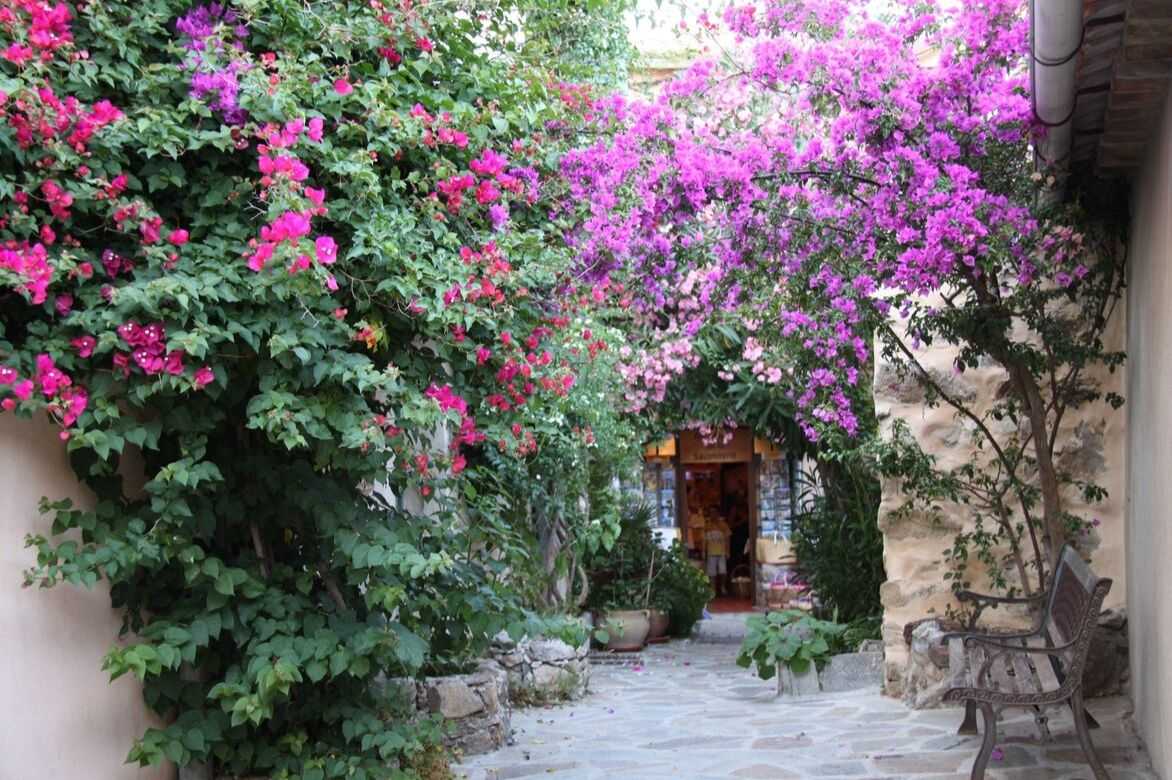
Overall very tender, Bougainvillea will truly thrive only in regions with mild winters and in gardens spared from severe frosts, even though some varieties can survive short frosts down to about -8°C. Outside the Mediterranean and in cold regions, pot culture with overwintering frost-free is essential.
Bougainvillea needs a warm, very sunny spot sheltered from winds and cold drafts. Undemanding as regards soil, it will perform best in a light, well-drained soil, preferably rich in humus and free of lime.
In mild climates it is ideal for covering a wall, a trellis, an exposed fence or simply dressing an arbour or a pergola. If left untrained, Bougainvillea can also form a large, original groundcover. Elsewhere it is planted in a large container to adorn terraces and balconies.
Read also
10 climbing plants for full sunMain species and varieties
While bougainvilleas with violet or mauve flowers are the most widespread and most cold-resistant, there are also hybrid varieties with orange, deep-pink, white or even bicoloured bracts. The species name of the variety is rarely specified because bougainvilleas are classified by colour for simplicity.
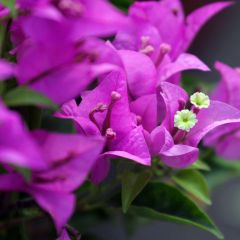
Bougainvillea spectabilis x glabra Violet de Mèze
- Flowering time June to October
- Height at maturity 5 m
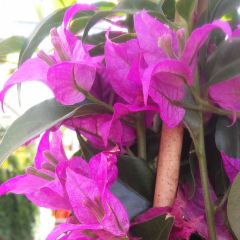
Bougainvillea glabra Sanderiana 'Alexandra'
- Flowering time June to October
- Height at maturity 8 m
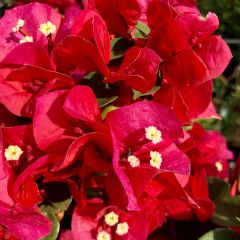
Bougainvillea spectabilis Deep Red
- Flowering time June to October
- Height at maturity 8 m
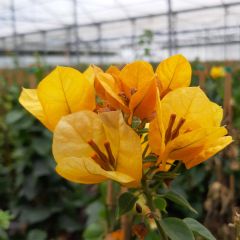
Bougainvillea spectabilis Yellow
- Flowering time June to October
- Height at maturity 8 m
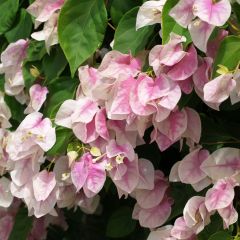
Bougainvillea spectabilis White Pink
- Flowering time June to October
- Height at maturity 8 m
Discover other Bougainvillea
View all →Available in 0 sizes
Available in 3 sizes
Available in 1 sizes
Available in 1 sizes
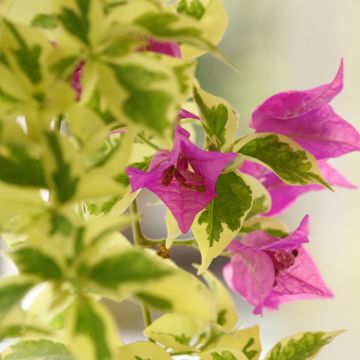
Available in 1 sizes
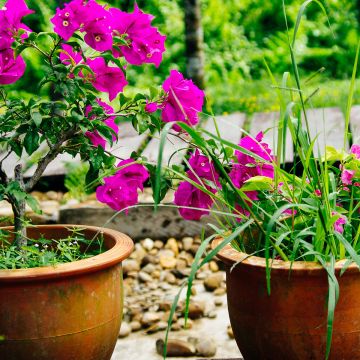
Available in 2 sizes
Available in 1 sizes
Available in 1 sizes
Available in 1 sizes
Planting bougainvillea
Where to plant?
Bougainvillea dislikes cold and is easy to grow in warm regions sheltered from severe frosts. It grows in subtropical and tropical zones where it is particularly luxuriant! It only thrives in open ground in mildest climates of our country, particularly in so-called orange zone (French Riviera and Corsica) and some regions of the Atlantic coast. While most bougainvilleas are frost-tender, some varieties such as ‘Violet de Mèze’ show better hardiness and can survive in slightly less favourable areas with short frosts down to about -8°C in a well-exposed, sheltered position, for example against a south-facing wall.
Elsewhere, where winter temperatures fall below 0°C, it will be grown in a large pot and overwintered in a bright room or a veranda/greenhouse kept frost-free at about 10-15°C where temperature does not drop below 8–10°C.
Whether in a pot or in open ground, bougainvillea needs a very sunny, well-sheltered aspect. Not demanding about soil type, it will thrive in rich, light, well-drained soil, without excess lime. It is a plant of rather dry ground that will tolerate drought very well once well-rooted.
It can be trained as you wish — simply espaliered, trained into a globe or even grown as a bonsai. Place it ideally at base of a support against which it can climb — a wall, an arch or a pergola — its prickles cling to any support. When not trained on a support, it will form a very floriferous, bushy groundcover.
When to plant bougainvillea?
In mild climates, plant in spring from March to May, once risk of frosts has passed.
How to plant?
In open ground
To dress a well-exposed wall or fence, place a young plant of bougainvillea every metre. Given its vigorous growth, 1 plant per m2 will be enough to cover in a few years an area of about 5 to 8 m2. In all cases, install a trellis or a stake to allow it to climb.
- Dig a hole three times wider than the rootball
- Place a layer of clay pebbles or gravel at bottom of hole
- Position plant in centre of hole, collar at soil level
- Plant in a mixture of 2/3 turf (blond peat), 1/3 garden soil and sand
- Firm lightly with foot
- Stake by regularly winding young shoots onto their support as they grow
- Water regularly until established
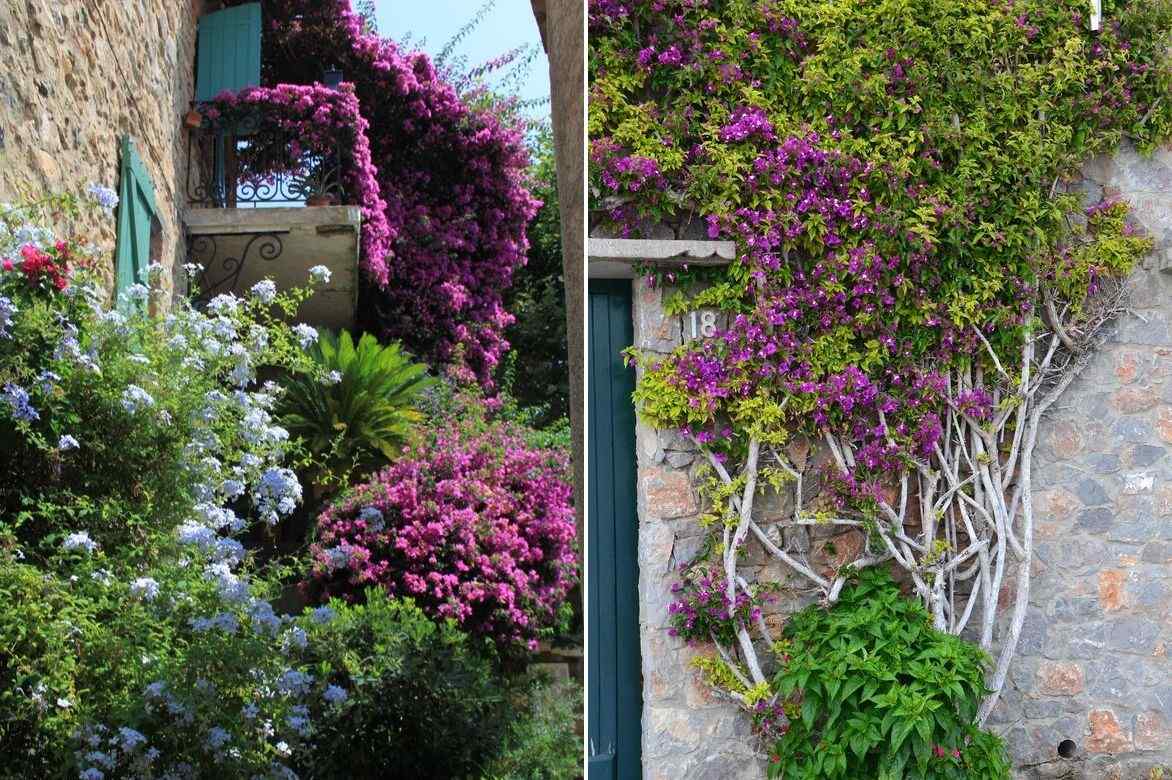
In a pot
Choose a large, deep pot.
- Place a layer of clay pebbles at bottom of pot as this plant dislikes excess water
- Plant in a mix of garden soil and potting compost rich in turf, or simply use potting compost for Mediterranean plants
- Provide a support
- Bring pot inside to shelter from severe frosts in cold regions
⇒ To find out more, discover our advice sheet: Grow bougainvillea in a pot
Maintenance, pruning and care
Bougainvillea in open ground
As with many climbers, initially help its stems to climb; thereafter, thanks to its prickles, it will progress by itself.
Bougainvillea is a plant for fairly dry soil. The more it is watered, the less it will flower and the more likely it is to lose its leaves. With this species, follow rule of “neither too much nor too little”! Water without excess but regularly nonetheless, about once a week during the period of growth and for the first two summers. Water only when soil is dry for several centimetres at the surface. Afterwards, water only in case of very hot weather.
Fertilisation is not necessary, except in very poor soil: during growth and flowering, apply a complete fertiliser.
It requires very little maintenance, only vulnerable to severe frosts. To protect it from cold, especially during first years, mulch the stump and protect aerial parts with a frost-protection fleece.
Bougainvillea in a pot
Bougainvillea in a pot needs regular applications of fertiliser and watering during the growing season. Allow the potting mix to dry out between waterings and do not let water stagnate in the saucer.
Apply a fertiliser for flowering plants in spring and summer and suspend these applications in winter.
In cold regions, in winter, bring it indoors into a cool place between 8 °C and 15 °C and reduce watering to once every two months. Mist the foliage from time to time with soft water. Return it outdoors after the last spring frosts, once foliage has been cleaned.
Find our advice on How to overwinter a bougainvillea?
Repot every two or three years in spring; in between, top-dress by adding one or more handfuls of potting compost.
When and how to prune bougainvillea?
Bougainvillea only flowers on 2-year-old shoots. Pruning is not really essential, but after 2–3 years of cultivation it helps balance the silhouette. Beware, it does not like severe cuts! Any excessively radical pruning would compromise chances of flowering for the coming season. However, it can be pruned as a bonsai or trained as a single-stem. Pruning is carried out at the end of winter, in March when vegetation restarts:
- Remove dry leaves and faded bracts
- Using a pruning shear, cut back new shoots to 3 or 4 nodes on the main stem, at a slant in the axil of an eye if you wish to contain growth of your bougainvillea
- Keep the 4 to 5 best branches
- Prune the other lateral branching above the first leaf
- Remove thin or dead branches (without destroying last year’s shoots) or those that stray too far from the original habit
- Simply bend the branches horizontally or towards the ground to stimulate the branching
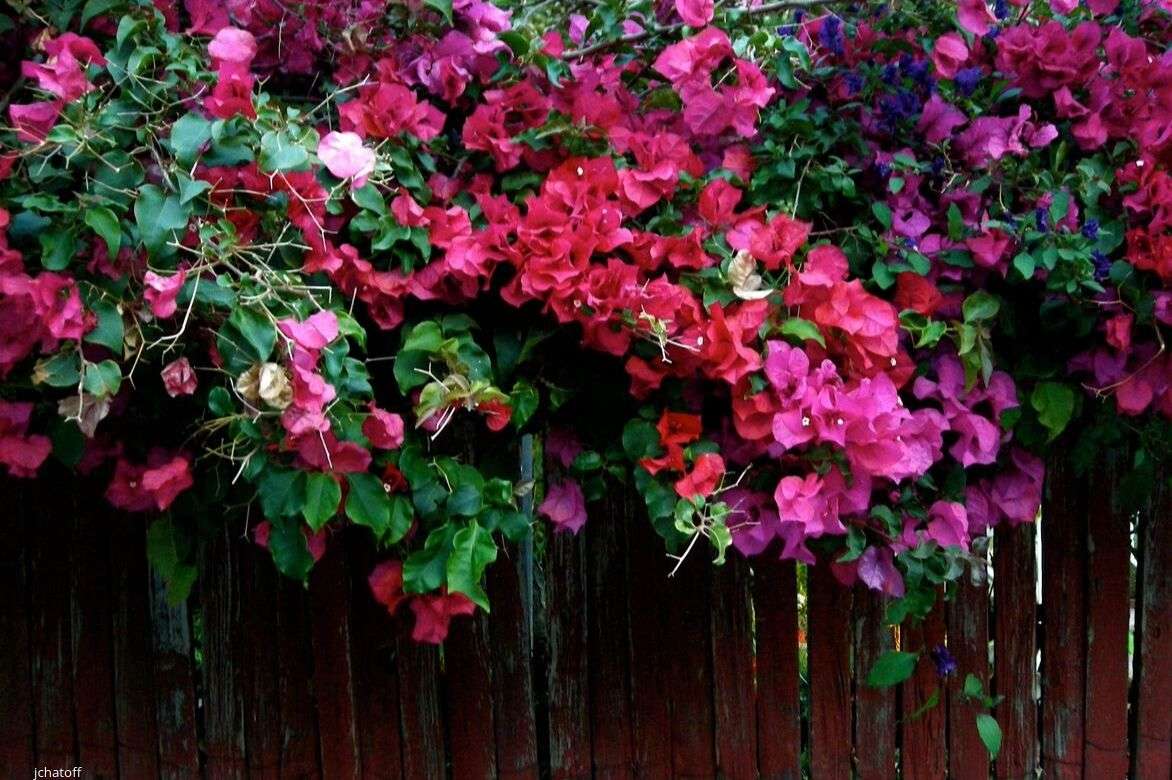
Diseases and potential pests
Bougainvillea grown in open ground in well-draining soil is rarely diseased and very hardy. Mealybugs or scale insects, aphids and red spider mites are the most common enemies of specimens grown indoors where atmosphere is all too often too dry or too confined :
- Mist foliage regularly,
- Remove diseased leaves,
- Sprays of soapy water will help dislodge aphids.
Les cochenilles farineuses are removed with a cotton pad soaked in 90% alcohol, then with sprays of vegetable oil to be repeated every 15 days.
To control red spider mites, spray with a nettle infusion.
If leaves turn yellow, the cause is probably excess water: reduce watering and ensure substrate is sufficiently well-draining. If flowers and leaves dry out, your bougainvillea is probably lacking water: water more often.
→ Find out more in our advice sheet : bougainvillea diseases and pests
Propagation: layering
Bougainvillea is difficult to propagate by cuttings; propagation by cuttings is tricky. Layering in spring remains, in our opinion, the simplest method of multiplying bougainvillea.
By layering
- Dig a furrow in the soil close to the base of your bougainvillea
- Choose a branch that is long enough and close to the base, easy to bend down to the soil
- Bury the aerial parts about 20 centimetres into the furrow, then backfill with potting compost
- Secure the layer with a hook, then lift the tip of the shoot and stake it
- Keep the potting compost moist throughout summer
- Separate the layer from the mother plant the following autumn depending on how well it has rooted
- Grow in a pot or plant in open ground the following spring
Combining bougainvillea
Like all climbing plants, bougainvillea does well on its own, adding an exotic touch to any support given. However, it remains easy to pair with other generous, exotically charming climbing plants.
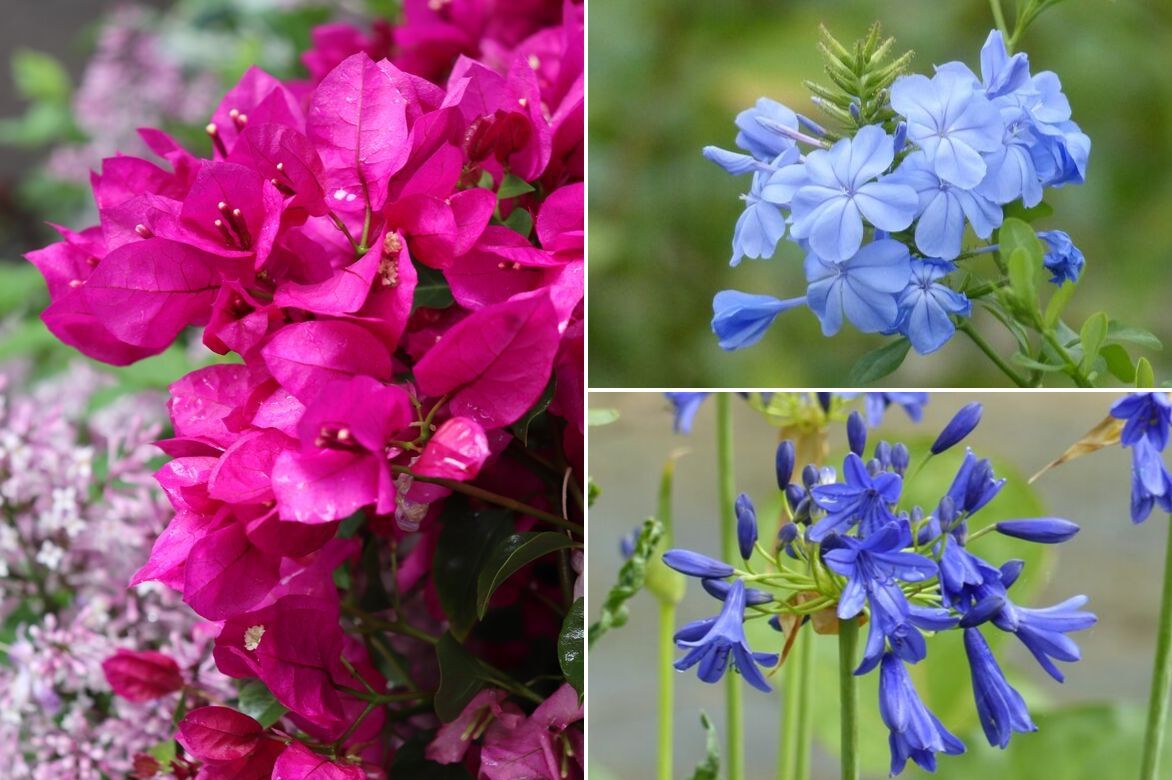
An example of pairing: Bougainvillea glabra ‘Sanderiana’ with Plumbago auriculata at its base and Agapanthes ‘Flower of Love’
In gardens protected from frost, it can be grown against a wall where it will flower alongside a Banks’ rose, a trumpet vine or other Mediterranean climbing plants such as Plumbago, passionflower and jasmine — all fond of warmth but relatively easy to grow in open ground in mild climate.
It also pairs well with Abutilon, Solanum crispum ‘Glasnevin’, Trachelospermum asiaticum (star jasmine) or black-eyed Susan.
→ Discover 5 ideas for pairing bougainvillea in Sophie’s guide!
Useful resources
- Discover our superb bougainvillea varieties
- Need help choosing? Follow the guide to find which bougainvillea to plant for your region
- Get inspired to dress your walls and pergolas with an original climbing plant!
- Our collection of Mediterranean climbing plants brings together the best species and varieties, discover them!
- Find our advice on pruning and training a bougainvillea
- Our advice sheet: Bougainvillea — most beautiful varieties
- Our advice sheet: bougainvillea diseases and parasitic pests
Frequently asked questions
-
Why isn't my bougainvillea flowering?
Bougainvillea needs plenty of heat and sun to flower well. Keeping it indoors over winter in a room that is too warm is a common reason your bougainvillea fails to reflower, as it needs to be overwintered at about 10 °C. This bush flowers on 2-year-old wood; if you pruned it too drastically, that may explain why you have no flowers. Another possible cause is overwatering. The more you water it, the less it flowers: water it about once a week during flowering and, in winter, every two months for potted specimens moved indoors.
-
Why are my bougainvillea leaves turning yellow?
Excess watering (water-filled saucer, poorly drained soil) is the most common cause. Reduce watering and repot into a well-draining potting compost.
-
Why is my bougainvillea losing its leaves in winter?
First of all, it's normal for it to lose a few leaves during winter. It may have lacked water during winter or, conversely, suffered from overwatering if there was heavy rain. Lack of light may also be partly responsible for leaf drop. Rest assured, after a light pruning in spring, it should quickly regain its foliage.
- Subscribe!
- Contents
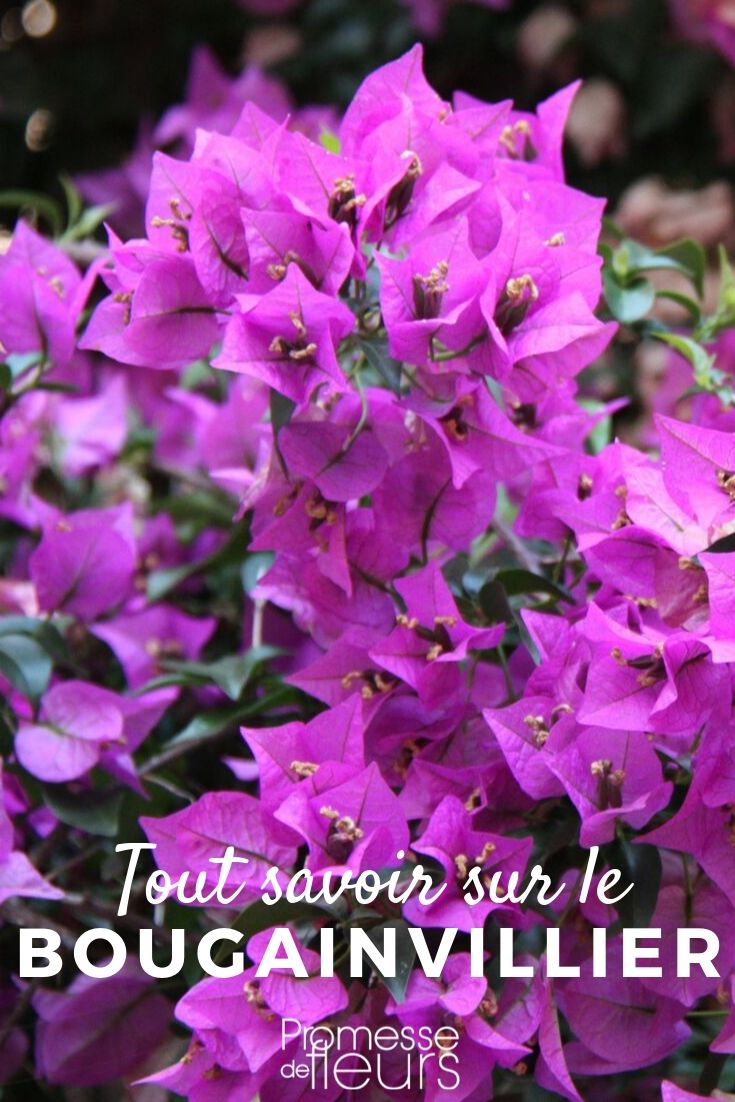































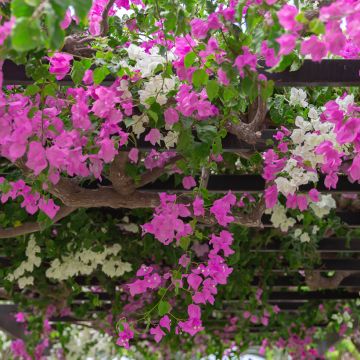

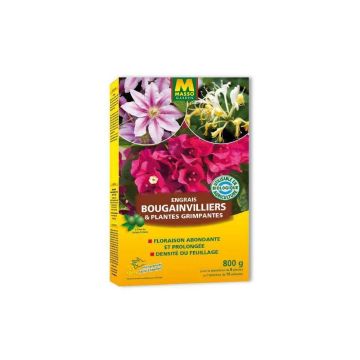

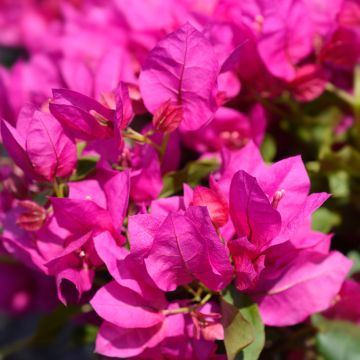

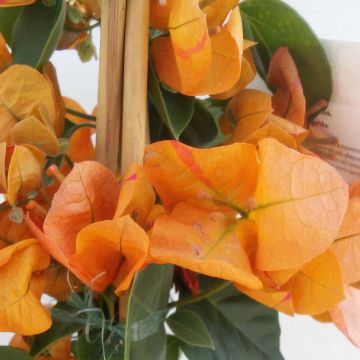

Comments